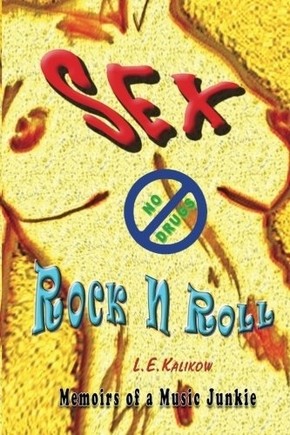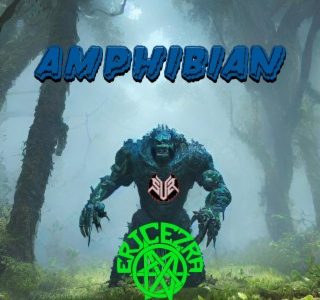
To cope with internet overload, we allow algorithms to sift through and feed us bits and pieces to match our tastes or cosmetically enhanced anchormen (and anchorwomen) to spoon up headlines to the tune of tone-deaf sponsors. All this through a multi-tasking world, where a generation pays half attention to work while constantly checking their Facebook pages and tweeting when they go to the bathroom. How does this affect the arts… and more specifically music?
Buy: http://www.amazon.com/Sex-No-Drugs-RockNRoll-Memoirs/dp/099713190X
Let’s go back a bit…
As a struggling recording artist in the 60’s and 70’s, my ultimate goal was to release an album. Not just a collection of songs, but a unified creation with a theme and purpose. In those years I’d turn out the lights, turn up the amplifier, and sit in the dark for hours, listening to full albums by The Beatles, The Stones, Billy Joel, Elton John, Led Zeppelin, and Jethro Tull (to name only a few). Each with a distinctive voice and sound, cuts carefully sequenced to take me on a journey, from beginning to end.
We needed radio to sell albums, so often edited down to 3 minutes, the ‘lead single’ had to have a ‘hook;’ a repeated melodic line or lyric to entice the teenage album buyer.
As technology moved vinyl to tape to CD, the ‘album’ remained, but underwent significant changes. The Disco explosion of the 70’s replaced lyrics and melodies with beats and production, as artists became interchangeable tools of celebrity producers and DJs. To capitalize on this trend, major record companies began to hire multiple ‘name’ producers to work on a single album, and the ‘concept album’ gave way to a collection of often disjointed productions, lacking continuity or artistic integrity.
Analog vs Digital
There was also a subliminal change taking place. When listening to a vinyl album or taped music, you’re actually listening to ‘analog’ sound waves being produced. With a CD, the sound waves are ‘digitized’ or broken up into pieces that your brain then puts together, much like looking at a bunch of colored dots up close, then standing back until you discover they make a picture. Friends like producer/engineer Rob Fraboni (Dylan, The Band, The Stones, Clapton, etc.) also contend that digital music has an adverse effect on the human body as opposed to analog. Like the difference you feel under the warmth of an incandescent light bulb, as opposed to a flickering fluorescent. Perhaps this explains why I can’t sit and listen to a CD like I once did a vinyl album.
Napster, the beginning of the end…
When record companies began suing their own customers for peer-to-peer downloading, the graffiti was on the wall. Like the industrial revolution before, the digital age wiped out the multi-billion dollar record business we once thought recession proof and timeless. But the music didn’t die, it simply morphed into another dimension as the infrastructure built to filter, foster, package, market and sell it disappeared. Now music exists in an unfiltered internet ocean requiring navigational tools like Spotify and Pandora. And the vestiges of past record companies, co-opted into entertainment conglomerates, now create brands instead of artists, with commercials, soundtracks, and albums produced, not for the music, but to sell the brand.
Reaction vs emotion
And ‘lead singles’ are also still being created. However, no longer 3 minute radio songs , but often just a string of repeating ‘hooks’ designed to catch the attention of the multi-tasking millennial, epitomized by Pharrell’s “Happy.” As the art of songwriting becomes less important, so do the songs. This is not to say that some ‘brand artists’ like Adelle, Ed Sheeran or Taylor Swift, aren’t fine songwriters. It’s just that, based on the current system, the odds are probably against developing such equally talented songwriter/artists in the future.
So, what’s next?
In the ‘80s, with the bestseller “Megatrends,” later reprieved in the 90’s with “High Tech/High Touch,” author John Naisbitt theorized that in a world of high tech, people would begin to long for personal, human contact. And at a recent music business convention, I couldn’t help but notice everyone so intent on their mobile phones, no one made eye contact. (No wonder “The Walking Dead” is so popular on TV). Could there be a reaction to this high tech alienation? A few trends indicate maybe so.
First, the amazing increase in vinyl record sales. And it’s not just to Baby Boomers… Last year Millennials pushed vinyl sales to a 26 year high.1 Perhaps, along with the novelty factor, some of these kids might actually start to hear (and feel) the difference.
And secondly, sales figures for acoustic guitars last year increased for the 5th consecutive year, topping 1.2 million units sold.2
This is not to suggest mobile devices will be discarded by new generation of hippies. But we may well see a push-back against corporate branding to more organically grown artists, perhaps even producing analog music in favor of digital downloads. And don’t be surprised at a proliferation of small local venues where musicians gather to perform and where the audience actually turns off their phones… And if one pops up in my neighborhood, you can bet I’ll be sitting in the front row… or maybe up there playing my Martin D28.
For over 35 years, L.E. Kalikow served as President of Music Business Reference, Inc., as well ` as a singer/songwriter under production agreements with Chess Records in Chicago and both Capitol and Columbia Records in New York, and as a staff writer for Beechwood Music at 1650 Broadway. He performed as the opening act for artists such as Richie Havens, Eric Anderson, Van Morrison and Jefferson Airplane, among others.
Sex, No Drugs & Rock ’N’ Roll (Memoirs of a Music Junkie) is available for purchase on Amazon and other online retailers on February 10, 2016. The companion Soundtrack Album is also available on iTunes.
By L..E. Kalikow author of Sex , No Drugs and Rock “N’ Roll: Memoirs of a Music Junkie






